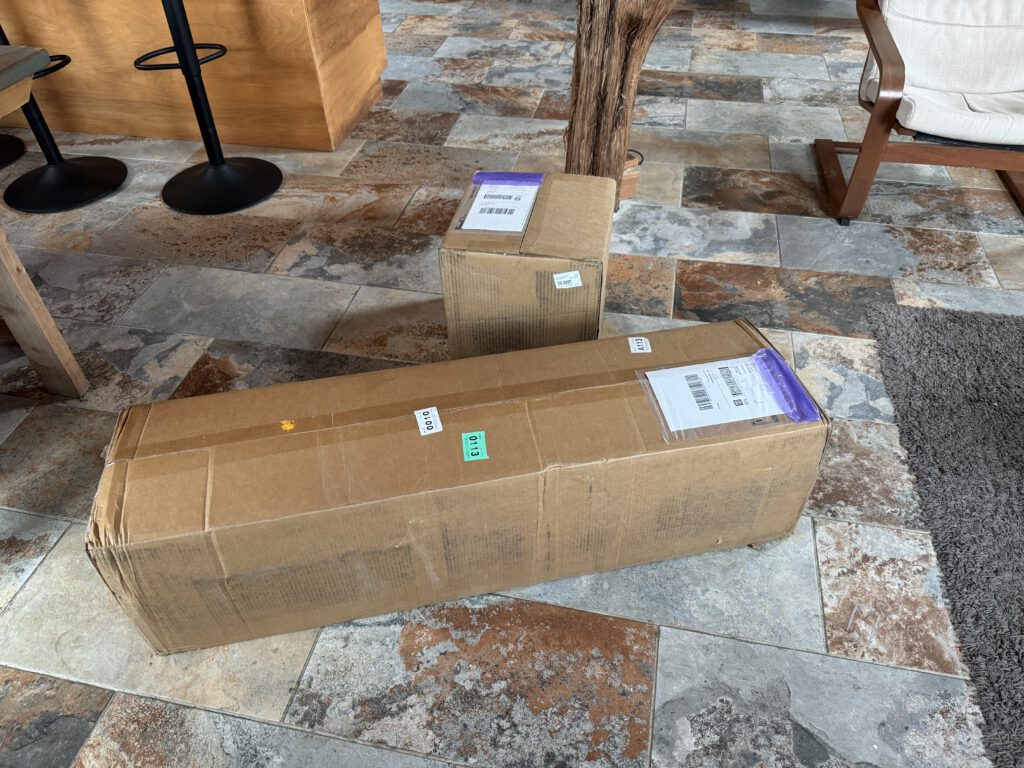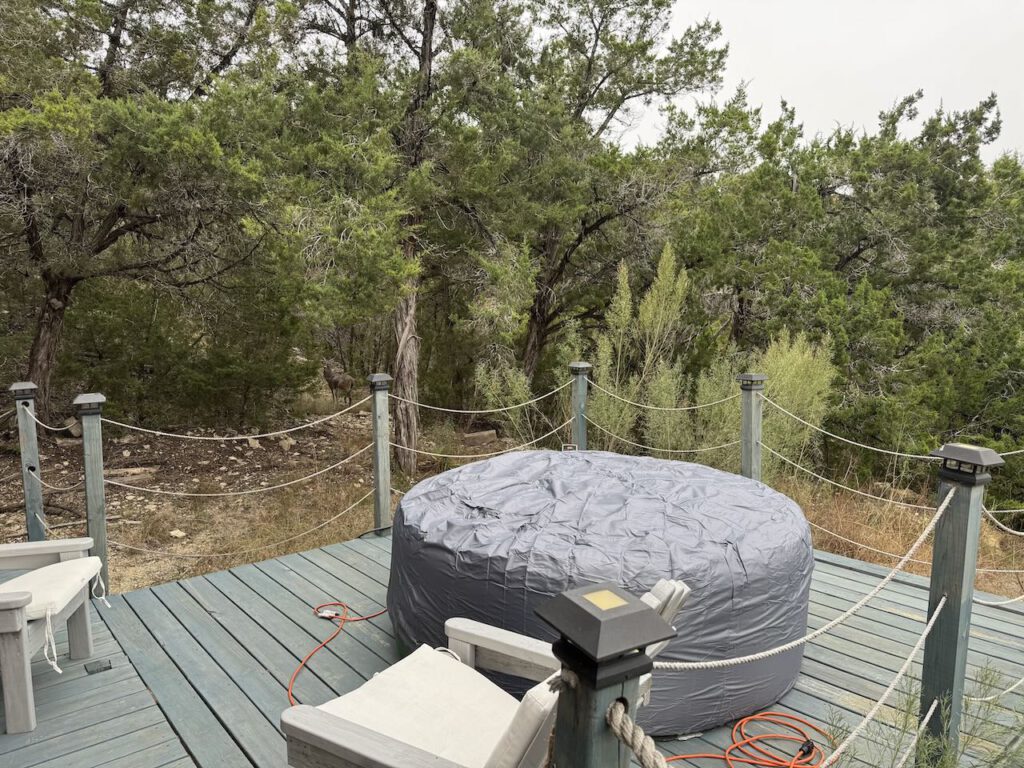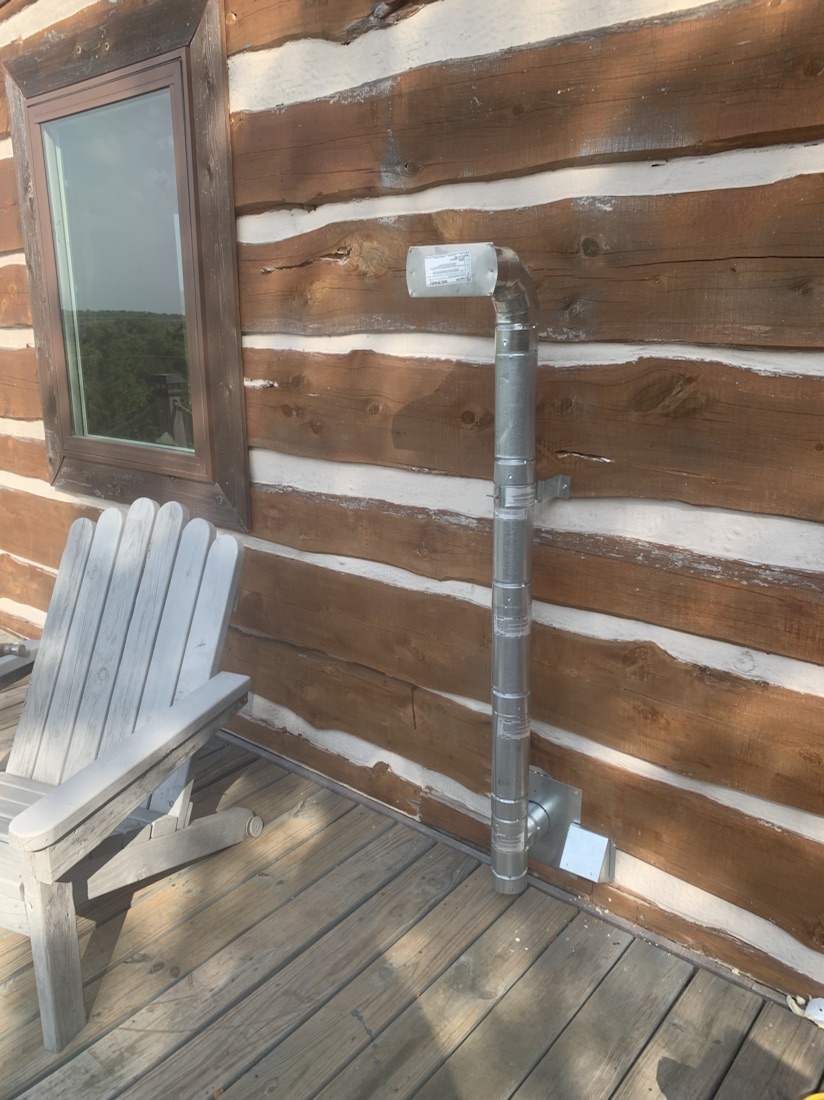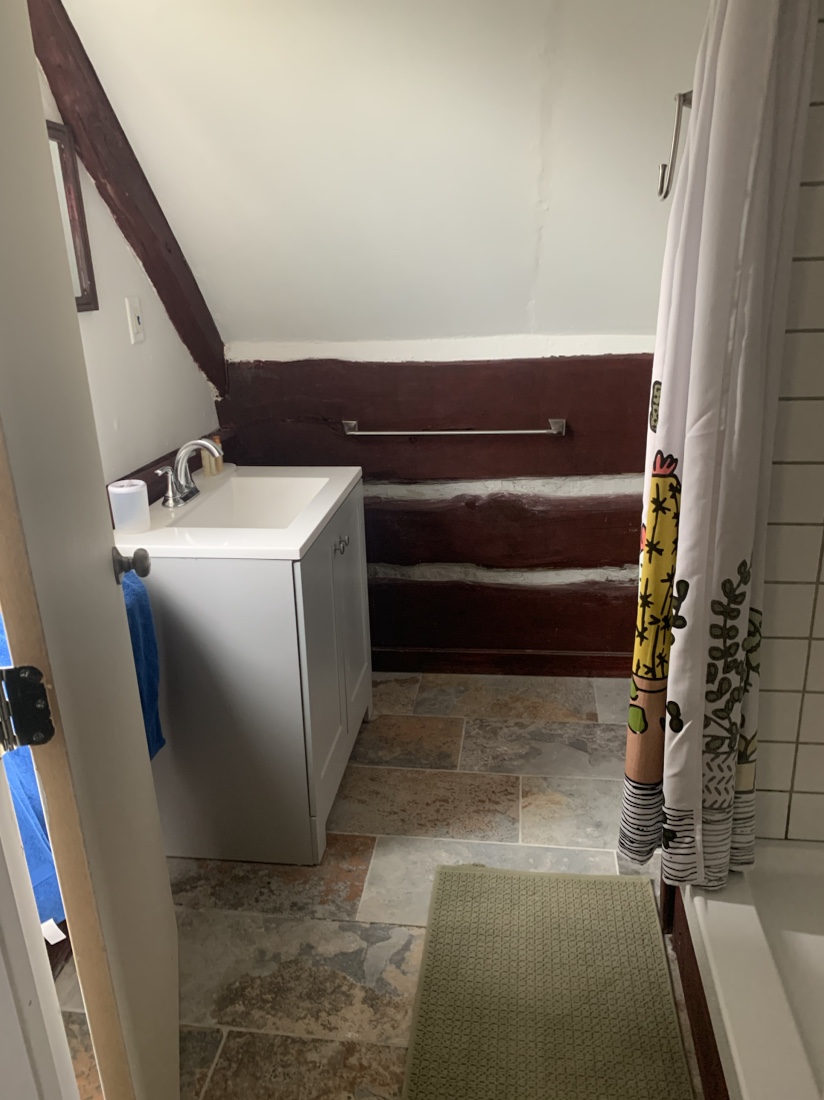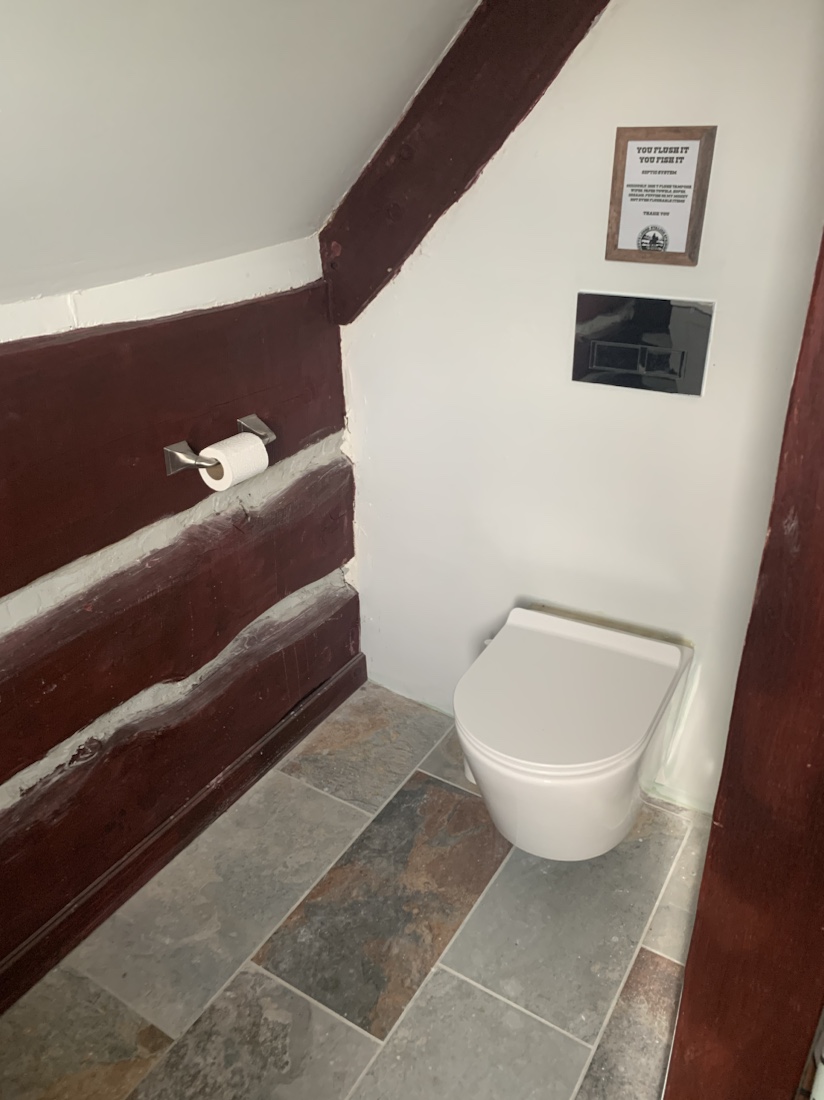Today the pellet stove was delivered. It’s not installed yet, as the exhaust pipes are still underway, but this is how it will look;

It’s not a huge one, but does come with a remote and an app, as it’s wifi connected. I chose this one because it’s compact and has the exhaust pipe low to the ground, so I don’t have to cut my way through the middle of a 7″ thick cedar wall.
It’s a little odd to be installing a pellet stove this time of year, but like they say; fix the roof when it’s dry, not when it’s raining.
The advantage of my tile floor is that it’s fire proof, so no need to put something under the stove.
The stove comes with a small fresh air hose, that will use outdoor air for combustion. The smoke exits the home through a thimble that runs through the 7″ log wall. A thimble is a double walled pipe to prevent heat coming in contact with the log wall. Once through the wall, the pipe will make a 90 degree turn up and end with a cap to prevent rain or birds entering it.
The big advantage of a pellet stove is that it burns cleaner than a wood stove, and doesn’t require a pipe that extends 3ft above the highest point of the roof, which in my case would be pretty high at around 12 meters. It’s also easier to start;

A simple press on the remote or the app will light it up and within 5 minutes the flames are full.
Then every x seconds, some pellets are dropped into the firepot by an auger.
It’s a little safer and a lot cheaper than a wood fire place, yet has a real fire. Fans blow air that passes the hot sides of the stove, and make it very efficient.
Monday I’m expecting the thimble and pipes, so then I can install it.
